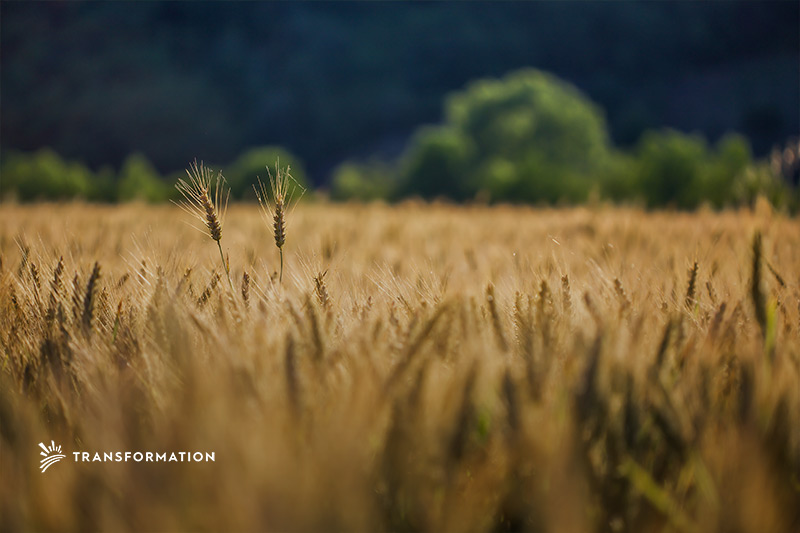Perennial Agriculture and Cropping Systems: Work Smarter, Not Harder
How does perennial agriculture and cropping systems hold up against the world’s primary use of annual cropping systems? Over the last 50 years, our global agricultural system has relied on science and technology to increase the yields of a limited number of crop varieties to meet the ever-growing demand for food and fiber. However, our agricultural system is feeling the effect of these attempts to increase global food production, which has not consistently factored in the social, environmental, and market ramifications of crop consolidation.
As a result, the global outlook of food security and agriculture is increasingly marred by threats of resource depletion, climate change extremes, and unreliable yields. To meet the challenges of the future, agricultural methods and capital investment need to shift to ensure a future of sustainable production systems.
Annual Cropping
Our global agricultural system is primarily based on the technological development of annual crops. Annual crops complete their full life cycle within one growing season and need to be replanted each year during their prospective season. Annual cropping and monocultures, the agricultural practice of growing a single variety at a time, often go hand in hand. Together, these systems comprise 89% of globally cultivated land or approximately three billion acres.
These annual-based monoculture farming operations produce grain (such as wheat, rice, maize) and oilseed (including soybean, sunflower seed, canola, peanut), which make up the majority of the human diet. However, these crops hold space as contemporary staple foods as a result of modern farming and seed development.
While these areas of technological development have been successful in increasing yield for a time, the impact of annual monocropping is now wearing down the land. The shorter growing seasons and less extensive root systems provide less protection against soil erosion, store less carbon in the soil, manage water and nutrients less effectively, and are less resilient to pests.
Furthermore, growing single-season crops reduces the amount of food that can be produced in a given area of land without compromising soil health. With farmland decreasing in value due to soil degradation and yields failing to meet the needs of a growing population, scientists are pointing to the sustainability of perennial cropping systems.
Perennial Cropping
Perennial crops are defined by their ability to be harvested multiple times throughout their life span and to stay alive for more than two years before needing to be replanted. Building perenniality into our current agricultural system by integrating perennial crops such as grains, oilseeds, and legumes, as well as forages, and trees are key to supporting healthy soil ecosystems that will ensure long-term food security.
One of the decisive attributes of perennial cropping is the creation of extensive root systems. While annual grain crops have relatively shallow roots, about 12 inches in depth, perennial grains have roots that may grow as long as 8 – 10 feet. Long and robust root networks reinforce and protect the soil by preventing it from breaking up and eroding. Perennial staple crops are also more resilient under less than ideal conditions, which is crucial in the face of climate change extremes, such as extended drought periods.
Because perennial crops have significantly longer lifespans and deeper roots, they have consistent access to rainwater and deep-soil water reserves. Furthermore, perennial cropping systems rarely leave the soil exposed, and the vegetation is able to more efficiently absorb water and therefore reduces runoff.
Furthermore, perennial plants develop more stable root systems than annual crops, giving them a key role in sequestering carbon in the soil. Their rate of sequestration is a staggering 3.34 tons per hectare each year. If this land area was expanded by another 26 million hectares by 2050 and these perennial crops sequestered an additional 280.6 million metric tons of carbon dioxide, its positive impact would be comparable to cutting meat from the American diet or eliminating the emission of 60 million cars.
Financial potential
Perennials require less fertilizer and energy inputs as well as less farm labor due to their deep root systems and longevity. As a result, perennial cropping systems require a smaller financial investment. Farmers who implement perennial cropping systems can direct more time and money towards increasing biodiversity, flexibility, and profitability, and less time seeding and fallowing.
Perennial crops are profitable year-round and offer stakeholders multiple products in diversified markets, such as food, animal feed, fiber, and biofuel. Perennial wheat, for example, can be offered in different markets based on maturity. Early in the season, perennial wheat acts as forage for animal feed. Over time the wheat develops into a crop fit for human consumption. In the last phase, perennial wheat provides a source of hay or straw for biofuel.
The climate benefits of perennial translate into financial returns. Because their yield is 2.4 times higher than annual staples—at 60 percent of the cost—savings are significant, ranging from $1.4-3.3 trillion, with an establishment cost of $83-190 billion and lifetime operational cost of $848-1,922 billion. Furthermore, as compared to widely grown and marketed vegetable crops, many perennial vegetables show higher levels of key nutrients needed to address nutritional deficiencies.
Conclusions
Perennial agriculture is a clear solution to maximizing yield while minimizing costs and soil degradation. It has been overlooked in favor of annual monocropping for too long, and the global agricultural system is suffering as a direct result. Perennial agriculture claims a significant role in the local, national, regional, and global efforts to combat climate change, enhance biological diversity, and to produce an abundant and sustainable food supply. There has never been a more opportune time to invest in the integration of agricultural perenniality and long-term production for a more sustainable and more profitable future.




Leave a Reply